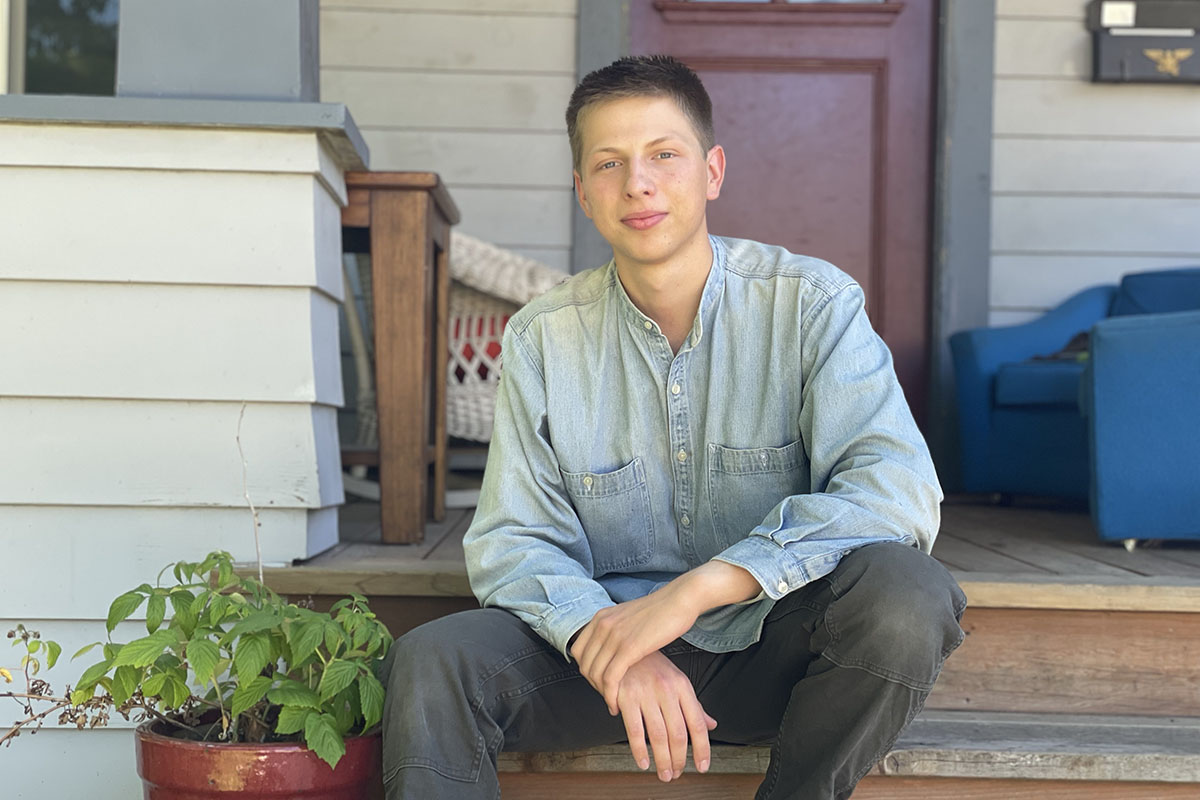Where There’s Smoke
Environmental studies major wins Class of ’21 award for innovative way to measure pollutants in wildfire smoke.
Growing up in Moscow, Andrey Marsavin didn’t think the great outdoors were all that great. Then, when he was a teenager, he immigrated to Los Angeles where hikes with friends in the San Gabriel Mountains set him on a new path.
At Reed Andrey distinguished himself as an environmental studies major, developing and deploying an innovative way to measure oxidized nitrogen from wildfires for his senior thesis. This project earned him the illustrious Class of ’21 Award, which was created by members of the Class of 1921 to recognize “creative work of notable character, involving an unusual degree of initiative and spontaneity.”
You can tell his passion for science in the way he describes air as “a giant beaker with so many things flying around it all, reacting with each other in crazy ways.”
He adds, “I’ve been fortunate to merge my love of the outdoors with my love of science.”
Andrey stands out for his resilience and resourcefulness, as well as his positive attitude and willingness to mentor other students, said Arthur F Scott Professor of Chemistry and Environmental Studies Juliane Fry. “From the lab to the field to the computer, Andrey has always risen to the diverse challenges admirably,” she wrote in her letter recommending him for the award. “He takes advantage of every opportunity to learn.”
Born in Russia, he moved to California when his father went to work in the film industry. In high school Andrey was mainly interested in visual arts, but his nascent interest in the environment inspired him to study science in college.
Going to Reed, with its proximity to the natural wonders of the Pacific Northwest, proved a perfect fit. With the Reed Outing Club he took backpacking trips across the region from the sublime rain forest of Olympic National Park to the stark desert of Hells Canyon.
Andrey majored in environmental studies, choosing a concentration in chemistry after taking an introductory course taught by Prof. Fry, an atmospheric scientist. He went on to work in Fry’s lab as part of her Atmospheric Chemistry Research Group.
“There was so much to learn to be able to work in that lab, so many instruments and moving parts,” he says. “Julie was a great mentor who invested time in her students. She had many cool field projects and collaborations with scientists all over the country.”
Andrey’s senior thesis involved the study of air pollutants during what turned out to be a historic wildfire season in 2020. Using cast-off parts from older instruments, he built a device for measuring oxidized nitrogen and installed it at the 9,000-foot summit of Mount Bachelor, overcoming hurdles posed by the COVID-19 pandemic along the way.
Fry describes him as one of her finest students: “A broadly knowledgeable scientist with the depth of training to do sophisticated and novel research at a very high level, who can also expertly put this work in the context of global climate change and facilitate its translation to address policy relevant issues like forest management and prescribed burn strategies.”
Andrey plans to earn a master’s degree in atmospheric science from Colorado State University to test the water (or would it be the air?) before deciding whether to pursue a Ph.D.
Tags: Academics, Awards & Achievements, Cool Projects, Editor's Picks, Climate, Sustainability, Environmental, Research, Students, Thesis
